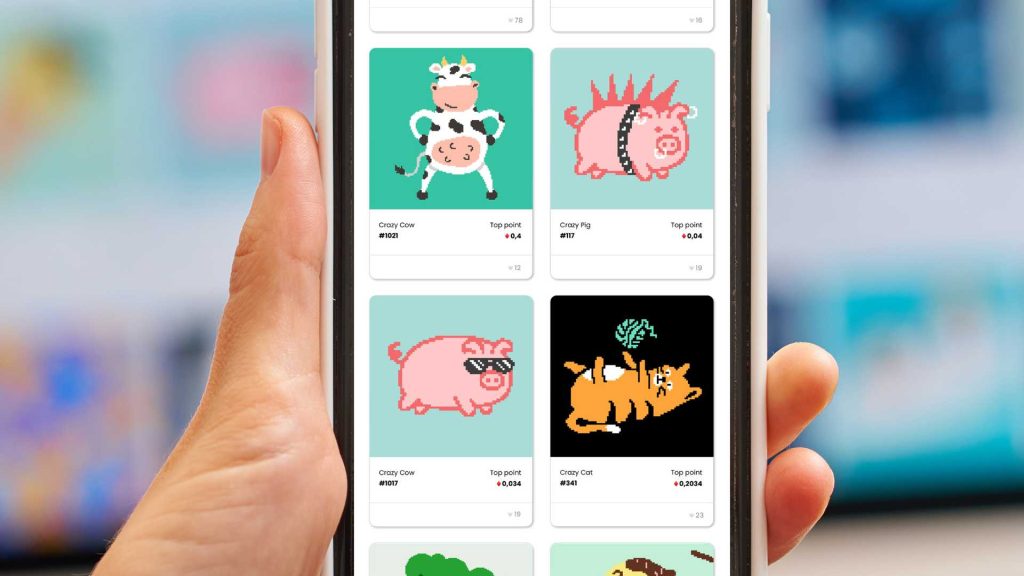Selling Digital Art Online: A Beginner’s Comprehensive Guide 2025
Selling Digital Art Online : In the era of digital transformation, the creative economy is flourishing—and digital art is at the heart of this revolution. From social media illustrations to NFTs and printable wall art, the demand for digital artwork is growing exponentially. In 2025, selling digital art online isn’t just a hobby—it’s a viable source of income, a powerful brand-building opportunity, and a globally scalable business.
Table of Contents
This detailed essay explores how to create, market, and sell digital art online, especially tailored for beginners who are looking to turn their passion into profit.
Why Sell Digital Art Online in 2025?

1. Global Reach & Scalability
Thanks to online platforms, digital artists now have access to a global marketplace. Unlike physical art, digital creations can be duplicated, licensed, and sold unlimited times without extra cost.
2. Low Investment, High Profit Margin
You don’t need a physical studio, inventory, or shipping logistics. Once created, your digital file can be sold repeatedly, yielding 100% profit after covering the platform fees.
Also Read : The Impact of Web3 on Digital Marketing in 2025
3. Demand for Custom and Ready-to-Use Digital Art
Digital art is widely used in:
- Social media graphics
- YouTube thumbnails
- Website designs
- Business branding
- NFT marketplaces
- Printable decor
4. Rise of Creator Economy Tools
Platforms like Etsy, Gumroad, Canva Creators, and Teespring empower artists to monetize easily. Plus, with AI tools and graphic software evolving, it’s easier than ever to start.
High Reaching Keywords in 2025 for Digital Art Sales
- How to sell digital art online for beginners
- Best platforms to sell digital art 2025
- Digital art business ideas
- Make money with digital illustrations
- Where to sell digital art prints online
- Top marketplaces for digital artists
- Selling digital art on Etsy guide
- Passive income through digital art
- Turn your drawings into income
- Digital art eCommerce for artists
Types of Digital Art You Can Sell in 2025
Before diving into platforms and strategies, understand the various categories of sellable digital art:
1. Printable Wall Art
Ideal for Etsy and niche decor stores, you can create high-resolution digital prints for home and office decoration.
2. Clip Art & Icons
Useful for designers, bloggers, and marketers. These can be sold as part of bundles on platforms like Creative Market or DesignBundles.
3. Digital Planners and Stationery
Customizable calendars, planners, trackers, and journal pages are in high demand, especially on Etsy and Gumroad.
4. Social Media Templates
Insta posts, YT thumbnails, Pinterest pins—ready-made templates are a goldmine for digital artists.
5. NFT Artwork
Selling unique digital items through blockchain technology. Platforms like OpenSea and Rarible dominate this niche.
6. Custom Commissioned Art
Portraits, character design, or fan art on demand. Artists take commissions via websites or social media.
Best Platforms to Sell Digital Art in 2025
Each platform serves a different audience and pricing strategy. Choosing the right one is critical to your success.
1. Etsy
- Best for printable wall art, planners, and clip art
- Built-in audience of digital buyers
- Easy to set up, SEO-friendly
- Charges listing + transaction fees
2. Gumroad
- Ideal for selling directly to your followers
- Supports subscriptions, bundles, and pay-what-you-want pricing
- No upfront fee
3. Creative Market
- Tailored for professional designers
- Sell fonts, themes, digital elements, and illustrations
- Requires application approval
4. ArtStation
- Popular among concept and fantasy artists
- Offers print-on-demand and digital downloads
- Used by professionals in gaming and film industries
5. OpenSea / Rarible
- Focused on NFTs
- Requires Ethereum wallet (like MetaMask)
- Highly competitive but rewarding if your work is unique
6. Ko-fi & Patreon
- Perfect for building a community
- Artists can sell content, get donations, and earn monthly support
7. Teespring / Redbubble / Society6
- Great for artists who want to sell art on merchandise like t-shirts, mugs, and posters
- No inventory needed—print-on-demand model
Step-by-Step Guide to Selling Digital Art Online in 2025

Step 1: Create High-Quality Digital Art
Use tools like:
- Procreate (iPad) – Best for hand-drawn digital art
- Adobe Photoshop / Illustrator – Industry standards
- Canva / Figma – Great for beginners and social media templates
- Blender / Cinema4D – For 3D digital art
Tips:
- Always create in high resolution (300 DPI) if you’re selling printable files
- Save in multiple formats (JPEG, PNG, PDF, PSD) to cater to different customers
- Organize your files clearly for easy upload and support
Step 2: Choose the Right Platform
Consider:
- Your audience (casual buyers vs. designers)
- Fees and commissions
- Platform SEO and organic reach
- Flexibility (subscription-based or product-based)
Step 3: Build a Strong Brand Identity
Your brand should reflect your art style and niche.
- Use a consistent color palette and logo
- Write a clear artist bio with relevant keywords
- Choose a catchy store name and domain (if building your own site)
Step 4: Price Your Digital Art Strategically
Pricing depends on:
- Art complexity
- Target audience (B2B or B2C)
- Licensing terms (commercial use = higher price)
- Platform competition
Suggested ranges:
- Printable Wall Art: ₹150 – ₹1000 per file
- Clip Art Bundle: ₹500 – ₹3000
- NFT Art: ₹2000 – ₹1,00,000+ depending on rarity
- Custom Portraits: ₹1000 – ₹5000+
Step 5: Write SEO-Optimized Product Descriptions
Use keyword-rich titles and descriptions.
Example:
“Boho Style Printable Wall Art – Set of 3 | Aesthetic Home Decor | Instant Download | 300 DPI | Digital Art Print”
Include:
- What’s included
- File format and size
- Usage rights
- How to use (print instructions, etc.)
Step 6: Promote Your Art Online
You can’t rely on platform traffic alone. Marketing is key.
Social Media
- Post time-lapse videos on Insta Reels and TikTok
- Use Pinterest to post pins that link to your shop
- Join art communities on Reddit, Discord, and FB
Email Marketing
- Collect emails using freebies
- Send updates, exclusive discounts, or new launches
SEO & Blogging
- Start a blog about digital art trends and link your shop
- Target long-tail keywords like “printable anime art for bedroom decor”
YouTube Channel
- Tutorials, behind-the-scenes process, and digital art reviews can attract subscribers who convert into buyers
Step 7: Deliver & Provide Excellent Customer Support
- Use platforms with automatic file delivery
- Offer instructions with each purchase
- Respond to messages and reviews professionally
- Provide occasional freebies or discount codes to loyal customers
Legal and Licensing Considerations
Commercial vs. Personal Use
Always mention if your product can be used commercially. Selling art for commercial use commands a higher price.
Copyrights and Trademarks
Avoid selling fan art of copyrighted characters unless you have rights or sell it as “inspired by” art. Always create original work.
License Your Art
You can license your work on stock platforms like Adobe Stock, Shutterstock, or Envato Elements to earn passive income.
Tools for Selling Digital Art in 2025
Design Tools
- Adobe Photoshop / Illustrator
- Canva Pro
- Procreate
- Clip Studio Paint
- Affinity Designer
Business & Selling Tools
- Etsy Seller App
- Gumroad Dashboard
- Printful / Printify (for POD integration)
- Notion / Trello (for managing products & calendar)
- G Drive (for digital file storage)
Common Mistakes to Avoid as a Beginner
- Underpricing your art – Know your value
- Not marketing your work – You must be visible to sell
- Using copyrighted material – Always create original
- Ignoring SEO – Keywords drive traffic
- Using low-resolution files – Leads to poor customer reviews
Future of Selling Digital Art Online
In 2025, digital art sales are expected to rise further due to:
- Expansion of the metaverse and virtual assets
- Widespread use of AI-powered art tools (like DALL·E and Midjourney)
- Increased demand for personalized digital experiences
- Growth of print-on-demand and eco-conscious digital decor
Selling Digital Art Online – Conclusion :

Selling digital art online is more than an income stream—it’s an opportunity to turn your creativity into a scalable business.
Buy Now : Ecommerce Website With 100 Products
Whether you’re a hobbyist or aspiring full-time artist, 2025 offers more tools, platforms, and demand than ever before. Choose your niche, create quality work, optimize for visibility, and deliver value—and success will follow.
Disclaimer : This guide is based on current market trends and practices as of 2025. Platform policies and legal requirements may change. Always consult legal and tax advisors when starting your digital art business.



